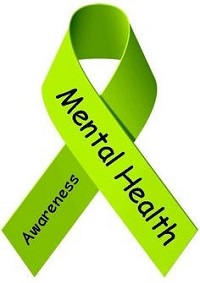- MN ABE Connect
- Archive
- May is Mental Health Awareness Month
 May 15, 2017
May 15, 2017
May is Mental Health Awareness Month
Does your student show any of the following symptoms – sad, isolating, trouble focusing, difficulty sleeping or sleeping too much? If so, they may be struggling with a mental health challenge.
 Mental health conditions are often shrouded in secrecy because many individuals feel shame and guilt about how they are feeling. Even worse, individuals living with mental illness often internalize the stigma that exists in our culture, damaging hopes for recovery. This stigma prevents them from seeking the treatment they need. Their condition worsens because they aren’t receiving the support and care they need to recover.
Mental health conditions are often shrouded in secrecy because many individuals feel shame and guilt about how they are feeling. Even worse, individuals living with mental illness often internalize the stigma that exists in our culture, damaging hopes for recovery. This stigma prevents them from seeking the treatment they need. Their condition worsens because they aren’t receiving the support and care they need to recover.
If a person had a broken arm, he/she would seek medical treatment. Mental health and physical health are equally important conditions. However, because people cannot see mental health challenges, symptoms are often ignored or minimized.
Adding to the stigma is the fact that many in the general public tend to be uneducated about mental illness. A U.S. Surgeon General’s Report on Mental Health identified stigma as a public health concern that leads people to “avoid living, socializing or working with, renting to, or employing” individuals with mental illness. Because of the stigma, people living with mental health conditions are:
- Alienated and seen as “others.”
- Perceived as dangerous.
- Seen as irresponsible or unable to make their own decisions.
- Less likely to be hired.
- Afraid of rejection to the point that they don’t always pursue opportunities.
The facts are:
- 1 in 4 Americans aged 18 or older suffer from mental illness at some point in their lives, according to the National Institute for Mental Health.
- Mental illness can be successfully treated with therapy and psychotropic medications.
- If there are 20 students in a classroom that would mean approximately 5 of them have mental health challenges.
 The stigma increases for many students from other cultures due to differing belief systems. For instance, the following quote from an Echo Minnesota cultural information sheet states: “According to the Hmong belief system, many aches and pains, depression and more serious symptoms of mental illness are caused by having lost souls.”
The stigma increases for many students from other cultures due to differing belief systems. For instance, the following quote from an Echo Minnesota cultural information sheet states: “According to the Hmong belief system, many aches and pains, depression and more serious symptoms of mental illness are caused by having lost souls.”
Things you can do to reduce stigma:
- Talk openly about mental health, just as you would talk about physical health.
- Be conscious of your language. For example, using words such as “crazy” or “out of her mind” are disrespectful.
- See the person, not the condition.
- Be willing to listen to students.
- Offer support by showing empathy and compassion.
- Give students mental health resources for professional services.
You can learn more about mental illness, local resources and classroom strategies by visiting PANDA’s website.
To learn more about how to reduce the stigma of mental illness and earn three CEUs, consider taking the free Literacy Minnesota online course titled, “Reducing the Stigma of Mental Illness” (available at https://literacymn.crhosts.cloud/).
Reference: National Alliance on Mental Illness (NAMI)
Newsletter Signup
Get MN ABE Connect—the official source for ABE events, activities, and resources!
Sign UpArticle Categories
- ABE Foundations/Staff Onboarding
- ACES/Transitions
- Adult Career Pathways
- Assessment
- CCR Standards
- Citizenship
- COVID-19
- Cultural Competency
- Digital Literacy/Northstar
- Disabilities
- Distance Learning/Education
- ELA
- Equity/Inclusion
- ESL
- HSE/Adult Diploma
- Listening
- Math/Numeracy
- Mental Health
- Minnesota ABE
- One-Room Schoolhouse/Multilevel
- Professional Development
- Program Management
- Reading
- Remote Instruction
- Science
- Social Studies
- Speaking/Conversation
- Support Services
- Teaching Strategies
- Technology
- Uncategorized
- Volunteers/Tutors
- Writing